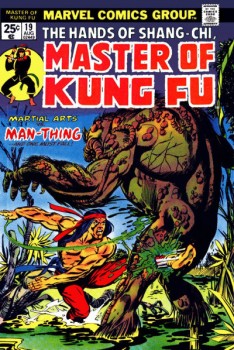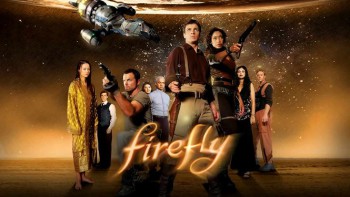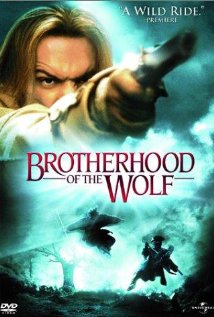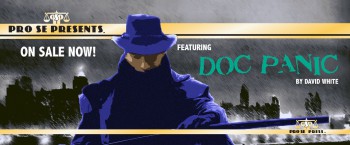Blogging Marvel’s Master of Kung Fu, Part Two
 Master of Kung Fu #19 was the final issue scripted by Shang-Chi’s creator, Steve Englehart. While the idea of a guest appearance from Marvel’s swamp creature, Man-Thing was an offbeat idea, the issue is more notable for the influence of the television series, Kung Fu. This influence is felt strongest in the philosophical discourse on pacifism conducted throughout the issue by Shang-Chi and his fellow Chinese visitor to the Everglades, Lu Sun (a character clearly based on Kwai Chang Caine from Kung Fu). Shang-Chi admires the pacifist philosophy but the unremitting pursuit of a pair of Si-Fan assassins, (an Asian and Arab double act known as Jekin and Dahar) make it impossible to put it into practice.
Master of Kung Fu #19 was the final issue scripted by Shang-Chi’s creator, Steve Englehart. While the idea of a guest appearance from Marvel’s swamp creature, Man-Thing was an offbeat idea, the issue is more notable for the influence of the television series, Kung Fu. This influence is felt strongest in the philosophical discourse on pacifism conducted throughout the issue by Shang-Chi and his fellow Chinese visitor to the Everglades, Lu Sun (a character clearly based on Kwai Chang Caine from Kung Fu). Shang-Chi admires the pacifist philosophy but the unremitting pursuit of a pair of Si-Fan assassins, (an Asian and Arab double act known as Jekin and Dahar) make it impossible to put it into practice.
Shang-Chi’s memories are colored by the realization of his father’s immorality. The childhood flashback (a familiar conceit from the Kung Fu television series) employed here serves to underscore the point that as the pieces of the puzzle come together for Shang-Chi, he is left more fragmented than before. This conundrum is one that Steve Englehart was leaving for future issues to build upon.
An intriguing sub-plot sees Sir Denis Nayland Smith and Black Jack Tarr launch an assault on Fu Manchu’s convoy of trucks as he abandons Florida following Shang-Chi’s successful sabotage of his operations in the preceding issue. While the casualties on the side of the Si-Fan are heavy, the mastermind makes his escape in the Everglades leaving Sir Denis facing another hollow victory. The Man-Thing is almost superfluous to the plot, but his position as an unwitting pawn in others’ games mirrors Shang-Chi’s own place as a man who strives for peace on a battleground.
 As might be expected from the guy who wrote
As might be expected from the guy who wrote  Now space opera and western are not terribly dissimilar, but
Now space opera and western are not terribly dissimilar, but 
